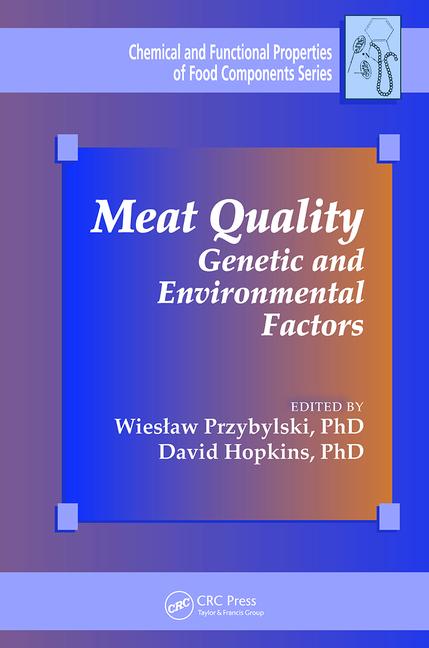Regulations & Legislation
Government issuances on foodborne pathogens

Although the United States Department of Agriculture’s Food Safety and Inspection Service (FSIS) has been fairly quiet lately with regard to new regulatory initiatives, two recent issuances involving foodborne pathogens should be noteworthy to the meat and poultry industry. A brief summary of each is provided below.
Labeling Instructions for Raw Beef Products Shipped to Intermediary Establishments
On April 30, FSIS published Notice 11-19, which updates the instructions to FSIS inspection program personnel (IPP) on verifying the use of instructional labeling statements concerning Shiga toxin-producing Escherichia coli (STEC) in raw beef products that are shipped to one or more official establishments prior to delivery to an official establishment for full lethality treatment (e.g., cooking, irradiation, high pressure pasteurization). Notice 11-19 only applies to labeling of raw beef products that have not been tested for, or have tested negative for, STEC.
Raw beef products accompanied by instructional statements may be produced and labeled at one establishment and then be sent to another intermediary establishment for further processing (e.g., repackaging, grinding, etc.) prior to shipping to another official establishment to receive a full lethality treatment. In these instances, the intermediary establishment must address the possibility of cross-contamination in its HACCP plan.
In instances where a producing establishment intends to send raw beef products to an intermediary establishment prior to receiving a full lethality treatment, IPP will follow FSIS Directive 10,100.2, Chapter IV to verify that the establishment: (1) maintains and implements sanitation procedures to prevent cross-contamination and (2) maintains records indicating the product was sent to an official establishment for a full lethality treatment. The product should be accompanied by an instructional statement, such as “for full lethality treatment,” “for cooking only,” or “for further processing into RTE products that will receive a full lethality treatment.”
If an intermediary establishment receives and further processes raw beef products accompanied by instructional statements, it can reapply (i.e., “carry forward”) the instructional statement without seeking label preapproval. IPP will monitor the intermediary establishment to ensure it is appropriately using the instructional statements and is employing the proper HACCP verification task(s). Intermediary establishments are also required to track and facilitate communication between supplying and receiving establishments to ensure that records are available showing each lot of product was sent for cooking or other full lethality treatment.
Notice 11-19 notes that ID warehouses and brokers are not official establishments and cannot re-box or further process product bearing instructional statements or disclaimers. ID warehouses may only store products.
CDC, FSIS, and FDA Issue FoodNet Report
On April 26, the Centers for Disease Control and Prevention (CDC), FSIS, and the Food and Drug Administration (FDA) issued the latest Foodborne Diseases Active Surveillance Network (FoodNet) report. The FoodNet report summarizes preliminary data regarding the incidence of foodborne illnesses in humans that occurred between 2015 and 2018. The FoodNet report tracked data from 10 states pertaining to eight pathogens, including Salmonella, Campylobacter and STEC.
The FoodNet report identified Salmonella, Campylobacter, and STEC as the most prevalent pathogens causing foodborne illnesses, with rates of infection per 100,000 people of 19.5, 18.3, and 5.9, respectively. Among the serotyped Salmonella isolates, the three most common were Enteritidis (2.6 per 100,000 population), Newport (1.6 per 100,000 population), and Typhimurium (1.5 per 100,000 population). Among the STEC isolates tested, 28 percent were determined to be O157.
The FoodNet report noted that the incidence of most infections is increasing, including those caused by Salmonella and Campylobacter; however, the report attributed some of this increase to the increased use of culture-independent diagnosis tests (CIDTs). With respect to Salmonella serotypes, the FoodNet report noted that the incidence of Enteritidis has remained steady over the past 10 years, in part due to adoption of FDA’s Egg Safety Rule, whereas Typhimurium incidences have decreased due to changes in poultry production practices and the increased use of vaccinations. The FoodNet report also noted that the incidence of STEC infections increased 26 percent in 2018 as compared to infections occurring during the 2015-2017 timeframe.
CDC, FSIS, and FDA had several recommendations based on the FoodNet report’s findings. With respect to meat and poultry production, the agencies recommend a greater focus on targeting Campylobacter in poultry, vaccinating poultry against Enteritidis, and further research into additional measures to decrease Salmonella contamination in meat and poultry. The agencies also had recommendations pertaining to the egg and produce industries. For instance, they recommended expanding the scope of the FDA Egg Safety Rule to cover small flocks. The agencies also recommended continued implementation of the Food Safety Modernization Act, especially the Produce Safety Rule as produce accounts for a substantial share of infections. NP
Looking for a reprint of this article?
From high-res PDFs to custom plaques, order your copy today!








